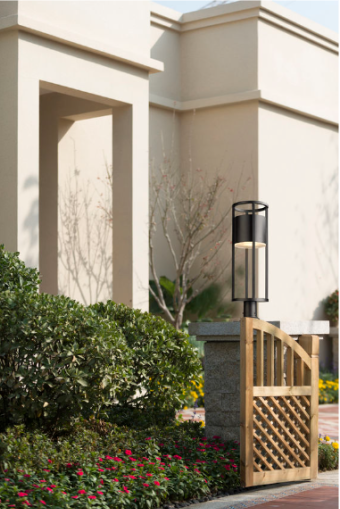A: If you use compound fertilizer, it is best to use ternary compound fertilizer, and the amount must be less. Or use ammonium sulfate plus superphosphate, the amount should be less. Do not use high-nitrogen fertilizers such as urea to avoid burning.
Mr. Wang of Liaoning Province: The roots of the corn seedlings are dead and the roots are red. What is the reason?
A: This situation belongs to corn blight, which is easy to occur when the temperature is low, the rain is high, and the humidity is high. It is mainly prevented by selecting resistant varieties, seeds and bactericide coatings such as carbendazim. In addition, the appropriate amount of seed fertilizer is applied at the time of sowing to cultivate strong seedlings and enhance the disease resistance of the corn seedlings.
Mr. Cui of Jilin Province: 50 kg of compound fertilizer with 50% of total nutrients per mu, and a one-time application on corn. Can you not topdress in the later stage?
A: If it is sandy soil, due to poor fertilizer retention capacity, nutrients are easy to lose, and the effect is quick after fertilization, but the stamina is small, so the sandy soil is recommended to add fertilizer and top dressing. Because the bottom fertilizer content is high, the dosage is large. If the base fertilizer is a high-nitrogen slow-release compound fertilizer, the topdressing fertilizer can be appropriately reduced. If it is a sticky soil with good fertility, the large amount of rain in the middle of the growth of the corn may cause nutrient loss, and this situation also requires a proper amount of topdressing.
Mr. Zhang from Xinjiang: How to use foliar fertilizer?
A: First choose the right variety. In the early stage of crop growth, in order to promote its growth and development, regulated foliar fertilizer should be selected; if crop nutrient deficiency or root absorption capacity declines in the late growth stage, nutritive foliar fertilizer should be used.
Secondly, the spray concentration should be appropriate. The concentration is too low and the fertilizer effect is difficult to exert. If the concentration is too high, it is easy to cause fertilizer damage, especially trace element fertilizer.
Also pay attention to the spraying time should be appropriate. Foliar fertilization is best done in the windless evening or in the morning without dew. It should be sprayed once in the rain within 3 hours, but the concentration should be reduced appropriately. Spray evenly. The number of sprays should not be too small and should be spaced.
Mr. Jin from Liaoning Province: What problems should be paid attention to when fertilizing peanuts?
Answer: The nutrient uptake of peanuts is less in the seedling stage, full fruiting stage, and maturity stage, and there are more flowering needles and pods. The absorption of nitrogen, phosphorus and potassium is the most nitrogen, followed by potassium and phosphorus. The nitrogen absorbed by peanuts mainly comes from the nodule nitrogen fixation, and the peanuts belong to the calcium-loving crop. The sufficient calcium can reduce the openness and increase the pod fullness. Therefore, the application of low-nitrogen and high-potassium phosphorus should be used as the base fertilizer for fertilization of peanuts. For example, the proportion of phosphate fertilizer in the base fertilizer should be increased. According to the appropriate topdressing in the late stage of growth, the application of nitrogen and potassium fertilizer should be applied. Also pay attention to the addition of trace elements such as calcium and boron.
Mr. Wang from Beijing: How should summer corn be fertilized?
A: The growth of summer corn is synchronized with the temperature and humidity of the weather, which is conducive to its rapid growth. Maize has seedling stage, jointing and booting stage, heading and flowering stage, and maturity stage. The absorption of nutrients by corn is generally the most at the jointing and booting stage, and the absorption ratio of nitrogen, phosphorus and potassium is roughly 2:1:2. Because the activity of soil phosphorus increases with the increase of summer temperature, it is beneficial to the absorption and utilization of crops. It is recommended to use high-nitrogen, low-phosphorus and high-potassium compound fertilizer for base fertilizer, and the base fertilizer should be sufficient to cultivate strong seedlings. In the small trumpet period, the application of nitrogen and potassium topdressing, the amount of topdressing depends on the condition of the seedlings, and the large amount is easy to cause the corn to be late.
Source: Agricultural Resources Guide
An Outdoor Post Light is a type of Lighting Fixture that is designed to
be mounted on a post or pole outside of a building or in a yard or
garden. These Lighting Products are typically used to provide illumination for
outdoor spaces, such as driveways, walkways, and patios, and can also be
used for security and safety purposes.
Outdoor post lights come in a variety of styles and designs, including
traditional lantern-style lights, modern minimalist designs, and
decorative fixtures with ornate details. They are available in different
materials, such as metal, wood, and glass, and can be powered by
electricity or solar energy.
When choosing an outdoor post light, it is important to consider the size and style of the fixture, as well as the amount of light it will provide. It is also important to choose a Outdoor Garden Light that is weather-resistant and durable enough to withstand the elements. The material of Outdoor Post Light is usually stainless steel, aluminum alloy and other durable materials, and the surface has been treated with anti-corrosion, sandblasting, etc., which has the characteristics of waterproof, windproof, and anti-corrosion, and is suitable for outdoor use.

Outdoor Post Light,Outdoor Lighting Fixture Post Light,Glass Garden Post Light,Modern Outdoor Post Light
Zhengdong Lighting Co., Ltd. , https://www.zdlightingfixture.com